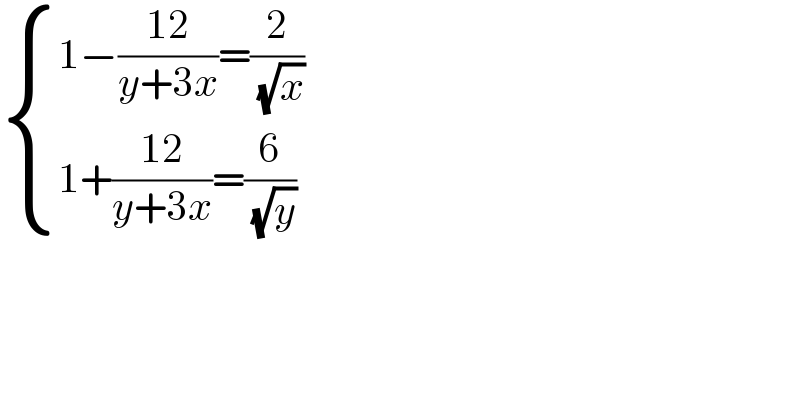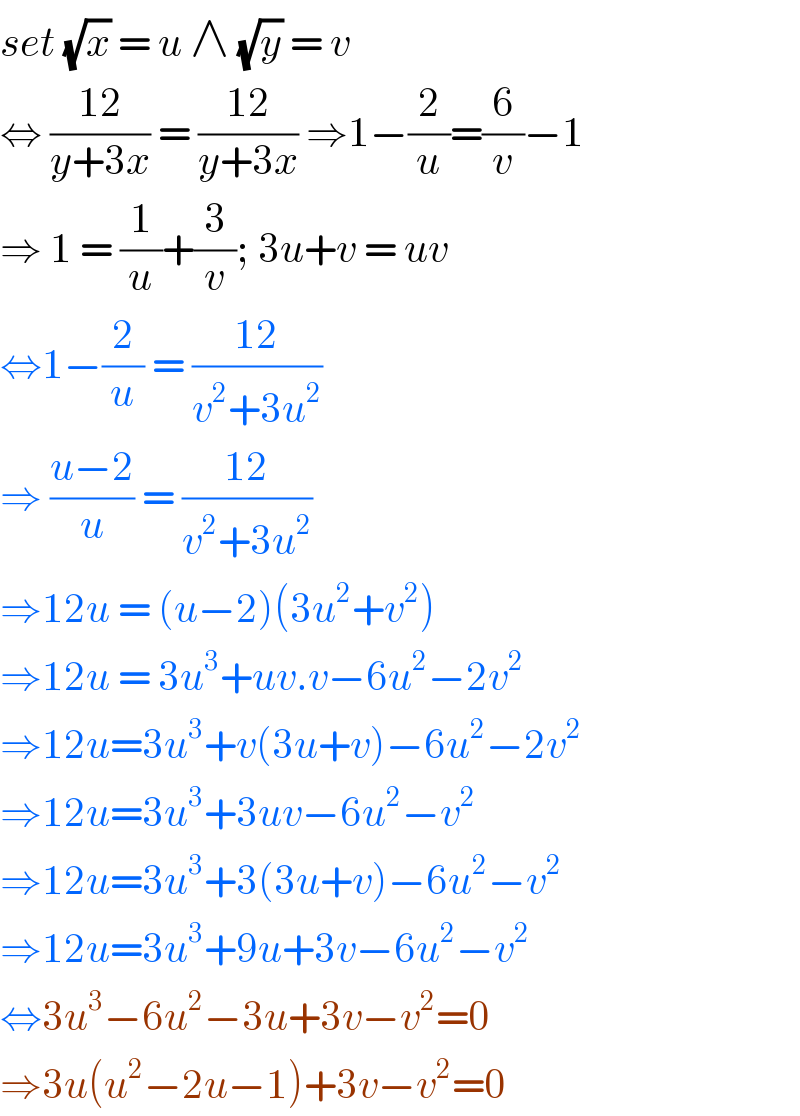
Question and Answers Forum
Question Number 114809 by bemath last updated on 21/Sep/20

Commented by bemath last updated on 21/Sep/20

Answered by MJS_new last updated on 21/Sep/20
![let x=p^2 ∧y=q^2 p^2 with p,q >0 ⇒ { ((1−((12)/(p^2 q^2 +3p^2 ))=(2/p))),((1+((12)/(p^2 q^2 +3p^2 ))=(6/(pq)))) :} ⇒ { (((q^2 +3)p^2 −2(q^2 +3)p−12=0)),((q(q^2 +3)p^2 −6(q^2 +3)p+12q=0)) :} (2)−q×(1) 2(q−3)(q^2 +3)p+24q=0 p=−((12q)/((q−3)(q^2 +3))) insert into (1) [or (2)] and transform [q>0] ⇒ q^4 +6q^2 −27=0 ⇒ q=(√3) ⇒ p=1+(√3) ⇒ x=4+2(√3)∧y=12+6(√3)](Q114835.png)
Commented by bemath last updated on 21/Sep/20

Commented by MJS_new last updated on 21/Sep/20

Commented by bemath last updated on 21/Sep/20

